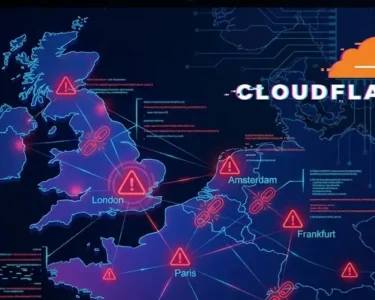Introduction to GPT-4
The evolution of artificial intelligence language models has reached a significant milestone with the introduction of GPT-4, developed by OpenAI. Building on the foundation laid by its predecessors, GPT-4 represents a leap forward in the capability and sophistication of language understanding and generation. This advanced model not only enhances the overall quality of human-computer interactions but also addresses various limitations observed in earlier iterations, such as GPT-3.
GPT-4 showcases improvements in various aspects, including its ability to comprehend context, generate coherent and contextually relevant responses, and handle more nuanced language. These advancements are largely attributed to the increased scale of the model, which incorporates a broader and more diverse dataset during its training phase. This extensive training allows GPT-4 to better understand linguistic subtleties and idiomatic expressions, ultimately producing more accurate and human-like responses.
The significance of GPT-4 extends beyond its technical improvements. It opens new avenues for applications across numerous fields such as education, content creation, customer support, and beyond. The enhanced language capabilities make it an invaluable tool for users seeking efficient solutions for complex communication tasks. Additionally, the developments in GPT-4 emphasize OpenAI’s commitment to responsible AI deployment, focusing on ethical considerations and the potential impacts of intelligent systems on society.
As the AI landscape progresses, the emergence of chat GPT-4 marks a pivotal moment for natural language processing technologies. By addressing the challenges faced by previous models, GPT-4 not only paves the way for future innovations but also redefines how humans interact with machines. With its advanced features and capabilities, this model is set to transform various industries, demonstrating the powerful impact of next-generation AI language models.
Key Features of GPT-4
The advancements encapsulated within chat GPT-4 significantly elevate its capabilities compared to earlier iterations. One of the hallmark features of this model is its enhanced reasoning ability, which allows it to process complex queries and deliver more accurate responses. This heightened reasoning skill enables GPT-4 to engage in deeper logical deducing and problem-solving scenarios, making it a valuable tool for users requiring critical analysis and sophisticated explanations.
In addition to advanced reasoning, GPT-4 boasts improved contextual understanding. This enhancement allows the model to maintain a coherent thread of conversation, ensuring that users’ context is preserved throughout interactions. As a result, chat GPT-4 can provide responses that are not only contextually relevant but also nuanced—a notable difference from its predecessors. This level of contextual awareness thus aids in producing more meaningful dialogues, whether in casual conversation or specialized discussions.
Moreover, creativity in content generation is another standout feature of GPT-4. The system is designed to understand prompts that require imaginative thinking, allowing it to produce text that ranges from creative writing to brainstorming ideas. This feature positions chat GPT-4 as not just an informational tool but also as a collaborator in creative projects. Its capacity to generate diverse narratives and suggestions makes it suitable for writers, marketers, and anyone seeking innovative input.
Combining these features—enhanced reasoning capabilities, improved contextual understanding, and greater creativity—ensures that GPT-4 is not merely an evolution in AI language models but a revolutionary facet that significantly enriches user experience. As advancements in artificial intelligence continue to unfold, chat GPT-4 stands at the forefront, demonstrating the profound potential of language models in various applications.
Applications of GPT-4
The arrival of chat GPT-4 has marked a significant milestone in the field of artificial intelligence, particularly in natural language processing. Various industries have begun to integrate this advanced model to enhance their operational efficiency and improve user experiences. The applications of GPT-4 span multiple domains, including education, business, content creation, and customer service, among others.
In the educational sector, chat GPT-4 has served as an invaluable resource for both teachers and students. For instance, educators can utilize this AI to generate customized lesson plans or provide real-time answers to student queries, fostering a more interactive learning environment. To illustrate, a university might implement GPT-4 as a virtual teaching assistant, capable of answering common questions about course materials, thus allowing professors to focus on more complex student interactions.
Business applications of chat GPT-4 are also extensive. Companies have been leveraging its capabilities for automating various tasks, such as drafting emails, generating reports, or even conducting market research. Organizations that have integrated chat GPT-4 into their workflows have reported increased productivity and reduced operational costs. For example, a marketing firm might use GPT-4 to create ad copy or social media posts, streamlining their content generation process while enhancing creativity.
The content creation industry has seen a revolutionary shift with the integration of chat GPT-4. Writers and content planners now utilize this model for brainstorming ideas, drafting blog posts, and providing contextually relevant suggestions. Such applications have not only improved the quality of content but have also accelerated the production timelines, making it easier to meet tight deadlines.
Additionally, customer service sectors are utilizing GPT-4 to develop chatbots that can handle inquiries with greater accuracy and empathy. By analyzing customer interactions, chat GPT-4 can generate responses that improve customer satisfaction. This ability to analyze and respond in real-time has transformed the way businesses manage their customer relations, making it a key asset in today’s competitive market.
Comparative Analysis with Previous Versions
The development of the GPT series has significantly influenced the landscape of natural language processing, with each iteration marking substantial improvements over the previous one. GPT-4, the latest model, demonstrates remarkable advancements compared to its predecessors, GPT-2 and GPT-3. One of the primary areas of enhancement lies in performance metrics. GPT-4 exhibits higher accuracy and coherence in generating responses, effectively addressing the limitations that were noted in earlier versions. This model benefits from a considerably larger dataset and more sophisticated training techniques, enabling it to produce more relevant and context-aware outputs.
User interaction is another crucial aspect that showcases the evolution of these models. While GPT-2 provided a foundational user experience, GPT-3 introduced a more advanced conversational capability, allowing users to engage in more intuitive dialogues. GPT-4 takes this a step further by incorporating mechanisms that enhance user engagement and satisfaction. With improved contextual understanding, it is more adept at grasping nuanced prompts and maintaining logical continuity throughout extended interactions. This enhanced interactivity positions GPT-4 as a more effective tool for applications ranging from customer support to content creation.
Additionally, the versatility of application is notable. While GPT-2 and GPT-3 suited specific tasks well, they sometimes struggled in diverse scenarios. GPT-4 addresses this limitation by showcasing exceptional flexibility across a wide range of applications. Whether it’s generating creative writing pieces or assisting with technical queries, GPT-4 demonstrates adaptability that is reflective of its advanced design. This makes it an invaluable resource for professionals in various fields who require precise and contextually suitable information. As AI continues to evolve, the improvements seen in GPT-4 set a new benchmark, indicating its potential to further expand the boundaries of what language models can achieve.
Technological Advances Behind GPT-4
The evolution of AI language models has reached new heights with the introduction of GPT-4, which incorporates several sophisticated advancements in technology. Central to the capabilities of GPT-4 are its enhanced neural networks, which enable the model to process and generate text with unprecedented accuracy and coherence. These neural networks have been refined through extensive research and development, utilizing a deeper architecture that enhances the model’s ability to understand context, nuance, and user intent.
Another pivotal aspect of GPT-4’s success lies in its training data optimization. Unlike its predecessors, GPT-4 has been trained on a more diverse and expansive dataset, which not only includes a wider range of topics but also an increased volume of high-quality content. This optimization ensures that the model can generate more relevant responses across various domains, making it a valuable tool for users seeking information on specialized subjects. The incorporation of real-time data updates enables GPT-4 to remain current and maintain its relevance in fast-paced environments.
The algorithms that power GPT-4 play a critical role in its functionality. Advanced machine learning techniques, particularly those involving reinforcement learning from human feedback (RLHF), have been implemented to fine-tune the model’s performance. By leveraging user interactions and feedback, GPT-4 learns to enhance its responses, making them more user-friendly and context-aware. The integration of these sophisticated algorithms allows GPT-4 not only to generate text but to engage in meaningful dialogue, laying the groundwork for improved human-computer interaction.
Overall, the technological breakthroughs in neural networks, training data optimization, and advanced algorithms have collectively contributed to the creation of GPT-4. These innovations mark a significant progression in the field of AI language modeling, establishing GPT-4 as a powerful and versatile tool in various applications ranging from simple inquiries to complex conversations.
Ethical Considerations in Using GPT-4
The advent of advanced AI language models such as chat gpt 4 raises significant ethical considerations that must be examined. One pressing concern involves the potential for bias in AI outputs. Machine learning models are trained on vast datasets sourced from the internet and other platforms, which may contain inherent biases based on cultural, racial, or social contexts. As a result, users must be conscious of how these biases can manifest in the information generated by chat gpt 4 and similar models. Developers, including OpenAI, are aware of these challenges and are actively seeking methods to minimize such biases through improved training methodologies and ongoing monitoring of outputs.
Another critical ethical concern is the proliferation of misinformation. The capacity of chat gpt 4 to generate coherent and contextually relevant text makes it a powerful tool for disseminating information. However, this same capability means it can potentially contribute to the spread of falsehoods or misleading narratives. OpenAI acknowledges this risk and strives to implement safety features and guidelines that discourage the use of their models for harmful purposes, ensuring users are aware of the importance of verifying information before sharing it widely.
Responsible use of technology is paramount when engaging with AI models like chat gpt 4. Users are encouraged to employ these tools transparently and ethically, considering the potential impact of the generated content on their audience and society at large. OpenAI promotes awareness through user guidelines and educational initiatives aimed at fostering responsible AI use, encouraging a balanced approach that values the benefits of advancement while addressing ethical implications. By doing so, the hope is to guide society towards a future where AI serves as a reliable ally, contributing positively to human knowledge and communication.
User Experience Insights
The introduction of GPT-4 has caught the attention of various sectors, drawing insights from educators, marketers, and developers about its usability and effectiveness. Users have highlighted that engaging with this advanced model has significantly transformed their workflows and project outcomes.
For educators, GPT-4 serves as an invaluable tool for enhancing student learning experiences. Many teachers report utilizing the model to generate tailored instructional materials, which cater to different learning styles. The efficiency with which GPT-4 can summarize complex concepts into more digestible formats has proven beneficial in the classroom. One educator noted that, “Using chat gpt 4 to assist in lesson planning has drastically reduced the time spent on administrative tasks, allowing more focus on student engagement.” This illustrates how the model not only augments content quality but also improves productivity.
Marketers, on the other hand, have embraced the capabilities of GPT-4 for content creation and strategizing advertising campaigns. Its ability to produce high-quality, relevant content has made it a go-to for crafting blog posts, social media updates, and email newsletters. A digital marketing specialist remarked, “The chat gpt 4 model has enhanced our creative brainstorming sessions, providing fresh ideas that have led to successful campaigns.” This feedback indicates a shift towards integrating AI tools into marketing strategies, emphasizing versatility and adaptation to varied project requirements.
Additionally, developers have expressed appreciation for the model’s API, which facilitates seamless integration into applications. Many report improved efficiency with chat gpt 4 in debugging code and generating documentation. A software developer stated, “Incorporating GPT-4 into our development process has streamlined our workflow and improved our team’s output.” Such testimonials showcase the extensive applicability of this generative model across different domains, underscoring its impact in enhancing productivity and innovation.
Future Outlook for AI and GPT Models
The future of artificial intelligence, particularly in the realm of language models like chat GPT-4, holds significant promise for transformative advancements across various sectors. As the capabilities of these models evolve, we can expect notable improvements in interactivity, personalization, and the integration of AI technologies into everyday applications. One key area for potential growth is the expansion of conversational abilities. Future iterations of GPT models are likely to enhance their understanding of context, allowing for more dynamic and natural interactions with users.
Additionally, advancements in AI could lead to more personalized experiences. By utilizing user data responsibly, future models may generate content and responses tailored specifically to individual preferences and needs. This increased level of personalization can improve user satisfaction, as people will receive more relevant and engaging content, resulting in a better overall experience. Furthermore, as users engage with chat GPT-4 and its successors, the models will become more adept at adapting to unique communication styles, thereby enriching the interaction.
Moreover, the integration of GPT technology into everyday applications will likely become more prevalent. Businesses, educational institutions, and healthcare providers can harness the capabilities of advanced AI models to enhance productivity and efficiency. For example, customer service platforms can leverage chat GPT-4 to provide quicker and more accurate responses to customer inquiries, streamlining operations and improving customer satisfaction. Additionally, educators may utilize these models to facilitate more interactive and personalized learning experiences, further enhancing educational outcomes.
As we look towards the horizon, it is crucial to consider the ethical implications of these advancements. Responsible AI development will be fundamental in ensuring that the integration of technologies like chat GPT-4 into society is beneficial and equitable for all users. In conclusion, the future of AI language models, particularly in the context of chat GPT-4, offers exciting prospects that could significantly reshape human-computer interaction and various industries.
Conclusion
As we have explored throughout this discussion, GPT-4 represents a significant advancement in the realm of artificial intelligence and natural language processing. This innovative model is not just an incremental update but a substantial leap forward, highlighting the capabilities of AI to engage in complex conversations, generate coherent text, and understand contextual nuances. The enhancements in language generation and comprehension are pivotal, making chat gpt 4 a crucial tool for various applications ranging from customer service automation to content creation and beyond.
The architecture and performance improvements in GPT-4 showcase how much progress has been made in AI technology. These developments open doors to new possibilities, enhancing user experience and enabling organizations to leverage intelligent solutions that were not feasible with earlier models. This has ramifications not only for businesses but also for various sectors such as education, health care, and entertainment, where the potential for personalized interactions and improved communication plays a critical role.
As we move forward, staying informed about the advancements in AI technology and tools like chat gpt 4 is essential. The landscape of artificial intelligence is rapidly evolving, and being aware of these changes can empower individuals and organizations to adopt innovative strategies that can drive efficiency and engagement. Exploring the functionality and versatility of GPT-4 will undoubtedly yield valuable insights into the future of communication and information processing.
In conclusion, the advent of GPT-4 signifies not only a remarkable enhancement in AI capabilities, but also an invitation for users and developers alike to engage with this transformative technology. By embracing the potential of GPT-4, we can look forward to a future where AI continues to redefine the boundaries of human-computer interaction.







